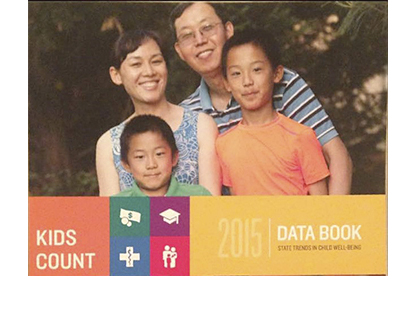Welfare reform is most often centered on changing the behaviors of adults on public assistance in order to break the cycle of generational poverty.
But to truly break that cycle, the intervention must come much earlier, before the heavy burdens and unrelenting barriers of poverty put a child so far behind that even average levels of educational and professional achievement become unlikely.
As the evidence bears out, early lives of want and hardship put children on track to become adults who depend themselves on public assistance, and who have their own children who go without. And on and on it goes.
That makes poverty, more than anything else, about children, and it makes solving poverty about lessening its destructive influences on Maine youths.
BEHIND FROM THE START
It’s an important point, because in Maine, a significant number of children live in poverty.
According the recently released Kids Count report from the Maine Children’s Alliance and its partners, the number of Maine children living in poverty — for a family of four, that’s less than $23,624 a year — grew from roughly 42,000 in 2008 to roughly 45,000 in 2013.
That means nearly 1 in 5 children are living in households that do not have the resources for basic needs. Before they even get going in life, and through no fault of their own, they are behind.
And because poverty puts roadblock after roadblock on their path to self-sufficient adulthood, catching up is hard to do.
The constant stress of living in a poor household — caused by, among other things, unstable and crowded housing situations, financial worry and family turmoil, and poor health and inadequate child care — affects the way a child’s brain develops.
It may make it more difficult for them to deal with stress and regulate emotions as they grow older. It also may impair learning ability.
But it doesn’t take changes in brain chemistry for poverty to affect learning.
WIDENING GAP
Children from impoverished backgrounds are more likely to have parents with low levels of education and who set aside less time at home for learning.
That puts poor children behind before they start school, and it allows the gap between them and their more well-off peers to widen as the school year goes on.
The gap-widening accelerates during the summer, then the cycle repeats itself the next year, and the one after that, and before long, we start to see real, long-term consequences.
Fourth grade is when students begin applying their reading skills to master other subjects. They need strong reading skills to keep up, and for those who don’t, the future does not look good — fourth-grade reading proficiency is a remarkably good predictor of whether someone will make it through high school, or drop out.
So by the age of 10, the book on many children has already been written. They don’t know it yet, but achieving a middle-class lifestyle is already a long shot.
MORE OBSTACLES
That’s one obstacle for children in poverty, but there are many more.
In addition to the hunger and moving and lack of home support for education, there could be a sudden illness in the family, the loss of transportation or a job, or an unexpected pregnancy, all of which are disruptive to people with modest means but are particularly devastating to people in poverty, as they further limit the likelihood of advancement.
Welfare and other poverty-abating programs, then, are not about keeping adults afloat, but alleviating those obstacles for children who are suffering only by chance of birth.
It’s a small distinction, but an important one, as Maine tries to break the cycle that passes the burdens of poverty from one generation to the next.
Send questions/comments to the editors.



Success. Please wait for the page to reload. If the page does not reload within 5 seconds, please refresh the page.
Enter your email and password to access comments.
Hi, to comment on stories you must . This profile is in addition to your subscription and website login.
Already have a commenting profile? .
Invalid username/password.
Please check your email to confirm and complete your registration.
Only subscribers are eligible to post comments. Please subscribe or login first for digital access. Here’s why.
Use the form below to reset your password. When you've submitted your account email, we will send an email with a reset code.